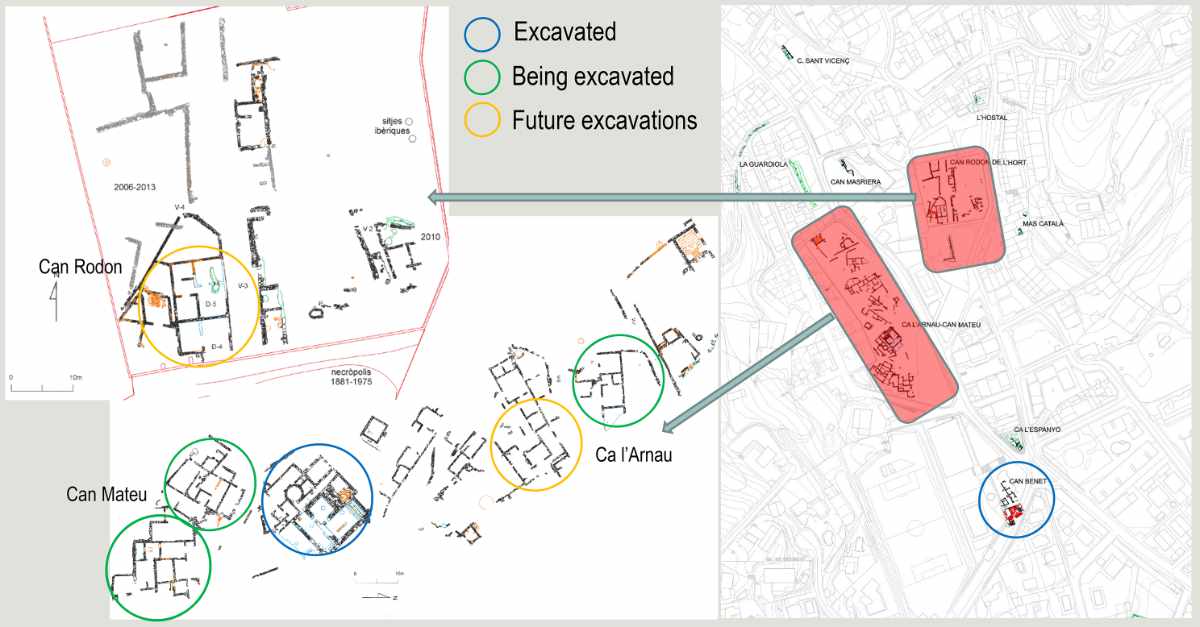The Ilduro Archaeological Project
Archaeology is the only source of evidence for life at the local scale in the classical world. The exploration of individual households provides fascinating insights into the complex lives of their inhabitants, and into how both individuals and groups used artifacts to create their identities within the broader context of Roman power structures. The aim of the Ilduro Archaeological Project (IAP) is to redefine perceptions about how each Roman provincial community had its roots in a unique and dynamic, social and cultural heterogeneous milieu. This diverse composition allows us to trace a wide range of social, economic and cultural practices within the archaeological record. Some of these practices changed continuously and rapidly during the second and early first century B.C.E., while others seem to be maintained for a much longer period. We aim to trace and understand, if never totally reconstruct, these practices and their evolution through time at two different levels: the household and the settlement.

Methodologically speaking, The Ancient Ilduro Archaeological Project is Interdisciplinary and diachronic in nature. It combines the study of epigraphy and numismatics, art and architecture, and history and archaeology over several centuries. Our theoretical approach is to understand change that does not rely or depend on abstractions and grand narratives such as Romanization. We want to document daily life and everyday practices: to see how things were made, exchanged, used and consumed, and to see what patterns emerge.
To do so, the fieldwork in Cabrera de Mar includes the detailed excavation and analysis of several domestic and religious spaces and their material culture; some of these structures were partially excavated during the 70s, 80s, and 90s, while others will be fully uncovered by our archaeological team for first time. The houses in Can Benet, Can Mateu and Ca l’Arnau were inhabited approximately between 125 B.C.E. and 80/70 B.C.E. They were located near the public baths and were part of two impressive neighborhoods that seemed to occupy one of the most privileged spaces within the urban layout of ancient Ilduro.
On the other hand, the later presence of the sanctuary at Can Modolell, a monumental cultic space that was later reused as a space of habitation, showing that several generations after the abandonment of the houses discussed above, the people in the area actively participated in collective rituals to re-enact traditions but also to create and re-shape local identities. As Häussler pointed out: “…in the course of time new local cults developed that were neither Roman or native. They were above all local cults, expressing a local identity but inserted in a dominant and global discourse and supra-regional mythical narrative .” Using the data from our excavations at Can Modolell and re-studying the site architecture and its decorative programme, the rich epigraphic corpus and the material culture available from the old excavations conducted in Cabrera de Mar, our will elucidate the role that this sanctuary played in the formation and negotiation of local and regional identities. Inscriptions are especially important towards understanding religious manifestations in this sanctuary, since allow for the identification of some of the deities worshipped as well as of the peoples that frequented this religious space, their status and some of their initiatives. Although the inscriptions do not allow the reconstruction of specific rites and beliefs, they provide essential information to reconstruct a lived religion and individual practices and agency. The starting point for the analysis of the place, as J. Rüpke has pointed out, is the understanding of religious phenomena as “a framework within which we can address the whole range of religious practices and conceptions, not as sets of fixed rules or beliefs, but as a permanently changing field of individual actions, inceptive traditions, monumental examples, and incoherent assumptions”
Finally, the late Roman levels of reoccupation will enable us to compare the daily practices of their inhabitants with those belonging to the Late Republican period, making our diachronic analysis possible. The excavations have provided evidence of a combination of activities (agriculture, harvesting, and crafts) that respond to effective diversification strategies generated by a small self-sufficient peasant community. At the same time, the material culture (which includes North African and Eastern pottery and amphorae) shows that this community was not isolated from the commercial and cultural circuits of the Mediterranean.
